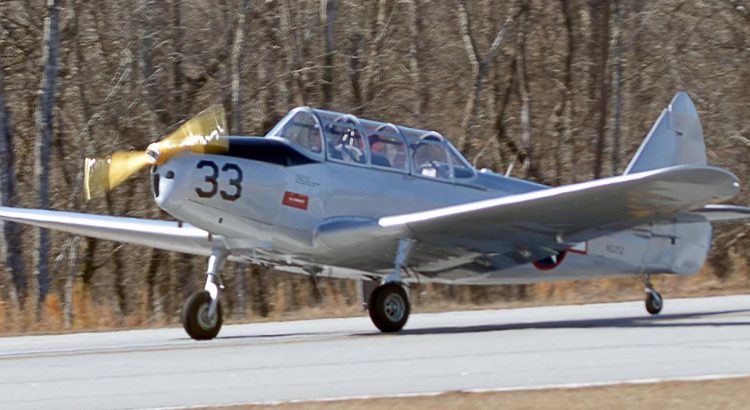Photo above – A WWII PT-19 Cornell trainer initially used by Tuskegee Airmen takes off for its first flight after two years of complete restoration by CAF Airbase Georgia members. (Photo by Charles Burcher)
After two years of dedicated restoration work, Fairchild PT-19A, serial number 42-83511, took to the skies again at Atlanta Regional Airport – Falcon Field, in Peachtree City, Ga., on Jan.18, 2024.
“This historic aircraft, originally used to train Tuskegee Airmen in World War II, had flown for Commemorative Air Force (CAF) Airbase Georgia for many years, but the leadership team decided it was time to take it apart and inspect, restore and repaint it,” said Airbase Leader Joel Perkins. “Re-skinning the aircraft with fabric and applying an authentic paint scheme took a lot of time, but our members were committed to recreating a piece of aviation history.”
The aircraft was completely disassembled and inspected. The horizontal stabilizer was replaced, some supporting wood structures were replaced, and all canopy glass was replaced. The aircraft was re-covered with polyester fabric, primed with a UV protectant and painted with Ranthane silver polyurethane. After new weight-and-balance calculations and final inspections, Air Force Major Gen. (Ret.) George Harrison, an Airbase Georgia pilot, was cleared to conduct a ground engine test and then take off.
This PT-19A was built Nov. 1, 1943, and CAF Airbase Georgia acquired it in 2006. It had been modified with a closed cockpit like the later model PT-26, to allow flying in inclement weather. It flew throughout the Southeast at airshows and fly-ins, offering rides to the public, until it was brought back to the shop for its restoration in 2022.
The PT-19 series was developed for the U.S. Army Air Corps in 1940 as part of its expansion program. It was a more advanced type of aircraft; inexpensive, simple to maintain and virtually viceless. It was one of a handful of primary trainer designs that enabled cadets to become pilots in the U.S. and Commonwealth training programs throughout WWII and beyond.
The cantilever, low-wing monoplane with fixed landing gear and a tailwheel featured two-place, tandem seating and an open cockpit. The simple but rugged construction included a fabric-covered, welded steel tube fuselage. The remainder of the aircraft used plywood construction, with a plywood-sheathed center section, outer wing panels and tail assembly.




